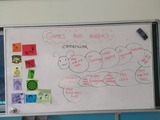
Bu derste öğrenciler yabancı dildeki oyun ve hobi kelimelerini kavrar ve bunları indoor games ve outdoor games olarak iki gruba ayırabilir.
- Subject:
- Languages
- Material Type:
- Lesson Plan
- Author:
- Ceyda Celik
- Date Added:
- 10/18/2020

Bu derste öğrenciler yabancı dildeki oyun ve hobi kelimelerini kavrar ve bunları indoor games ve outdoor games olarak iki gruba ayırabilir.
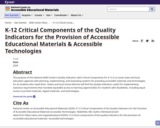
The purpose of the National AEM Center’s Quality Indicators with Critical Components for K-12 is to assist state and local education agencies with planning, implementing, and evaluating systems for providing accessible materials and technologies for all students who need them. States and local school districts will find the Quality Indicators useful for implementing statutory requirements that mandate equitable access to learning opportunities for students with disabilities, including equal access to printed materials, digital materials, and technologies.

How can you use the Engineering Design Process to access a geographically inaccessible location to deliver supplies?

Agricultural Connections is a middle school curricular program framework created by EarthGen. For this unit, we offer professional development training and assistance with implementation. Please let us know if you are interested in implementing this program at your school or district! Please contact info@earthgenwa.org for more information.

Meiosis is important in assuring genetic diversity in sexual reproduction. Use this interactive animation to follow Meiosis I (reduction division) and Meiosis II in a continuous sequence or stop at any stage and review critical events.

This animation demonstrates the stages of mitosis in an animal cell. Use the control buttons in the upper left to run the complete animation. Click on any intermediate stage (for example, Anaphase), and see a representative still frame.
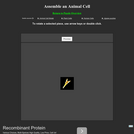
Try your hand at assembling the following animal cell jigsaw puzzle created with an image from CELLS alive! This puzzle is 32 pieces and generally takes a few minutes to solve. Have fun!
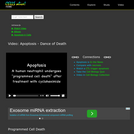
This is a great site to learn about apoptosis. It includes pictures, information, and links to other great sites on apoptosis. There is also a video that is available for download.

In this problem-based learning module, students will be asked to brainstorm ideas and think innovatively both independently and collaboratively in addressing a real-world problem that is relevant to their daily lives and health. Are students aware of their calorie intake and how it affects their overall health? Students will investigate the calories consumed in a typical day and how much physical activity is needed to stay healthy and fit. Students/teams will be encouraged to use the internet for research purposes in their design phase. Students will utilize various online platforms to design an infographic that can be shared with relevant individuals in the community and others in the school building

This website has five great astronomy activities! By engaging in these activities, you can learn about the Milky Way Galaxy, the Sun, the Big Dipper, and stars!

Try your hand at assembling the following bacteria jigsaw puzzle created with a Streptococcus image from CELLS alive! This puzzle is 32 pieces and generally takes a few minutes to solve.

Bio Cube is a useful summarizing tool that helps students identify and list key elements about a person for a biography or autobiography.
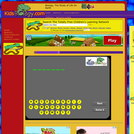
Play this biology hangman game to help you study your biology terms!

Try this fun problem! In any group of six people, what is the probability that everyone was born in different months?
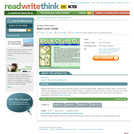
Explore the parts of book covers and dust jackets with this online guide, designed to to allow users to review the content that appears on each portion of these artifacts.
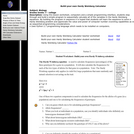
Using this lesson worksheet, computers and a simple programming interface, students step through and build a simple program to sequentially calculate all of the variables in the Hardy Weinberg equations. By building the program in sequence it is hoped that students will learn the sequence to solve a Hardy Weinberg problem and appreciate the value and power of computer number crunching capabilities as well as sequential programming considerations.
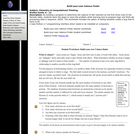
By building a program to determine the valence of ANY element on the first three rows of the Periodic table, students learn the steps to solve the problem while learning how to program logic and think about processing data in sequence. NOTE: The worksheet includes the option of letting students create a bug that they have to fix.
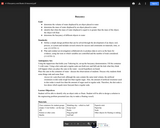
This unit consists of five lessons covering buoyancy and engineering boats. Each lesson includes goals, anticipatory set, learner objectives, guided practice, procedure instructions, closing activities, and extensions. Student handouts and worksheets are also included.
Lesson 1: Intro to Buoyancy
Lesson 2: Engineer a Barge
Lesson 3: Intro to Sails & Motion
Lesson 4: Engineer a Sailboat
Lesson 5: Final Vessel
NGSS: 3-5-ETS1-1, 3-5-ETS1-2, 3-5-ETS1-3
Lesson 1 materials: empty 2-liter bottles with tops cut off, pennies or other coins, marble, modeling clay, crap wood, rocks, pingpong ball, golf ball, popsicle stick, paper clip, scale, other object for floating or sinking
Lesson 2 materials: for each student - 12" x 12" piece of aluminum foil, 4 popsicle sticks, 2 straws, 12" masking tape; teacher pre-setup - enough pennies for testing (500 pennies per group), pool filled 2/3 with water
Lesson 3 materials: string/yarn, 1/2 straw for each student, 2 different types of paper (tissue & white copy paper), tape, scissors, fan, wooden skewers, 2 popsicle sticks per student, rulers, protractors, stencils.
Lesson 4 materials: 8 popsicle sticks, 1 wooden skewer, 1 straw, masking tape or duct tape, tissue paper or copy paper
Lesson 5 materials: same as Lesson 2
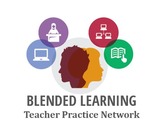
This problem-based learning module is designed to master the Ohio Learning standard of Science in Earth and Space Science number 2, Cycles and Patterns of Earth and the Moon. Thermal-energy transfers in the ocean and the atmosphere contribute to the formation of currents, which influence global climate patterns. Students will be exploring the various factors affecting the climate patterns we experience due to thermal energy. Students will work independently as well as with a partner. The final product is expected to be presented to their peers and teachers. This blended module includes teacher-led instruction, student-led stations, real world data analysis and technology integrated investigations.
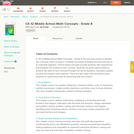
In CK-12 Middle School Math Concepts – Grade 8, the learning content is divided into concepts. Each concept is complete and whole providing focused learning on an indicated objective. Theme-based concepts provide students with experiences that integrate the content of each concept. Students are given opportunities to practice the skills of each concept through real-world situations, examples, guided practice and explore more practice. There are also video links provided to give students an audio/visual way of connecting with the content.